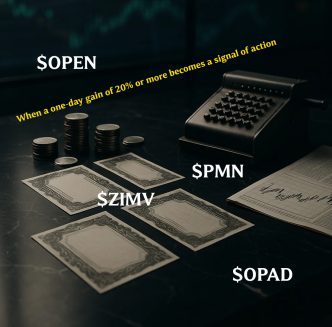Complete guide to options trading: How to make money on stocks
Stock options often seem like something mysterious, although they are actually a contract between two parties. Such a contract gives the right (but not the obligation) to buy or sell a stock at a fixed price in the future. Most importantly, it is not the stock itself, but a derivative instrument that opens the door to a flexible investment or speculative strategy.
To simplify, options allow you to lock in a price and benefit from the movement of an asset without owning it directly. This is why they are becoming popular with both institutional and retail investors, especially against the backdrop of volatile markets and the need to hedge risk.
How stock options work
The basic concepts are calls, puts and strikes
There are two key types of options: calls (to buy) and puts (to sell). Each has its own logic. A call option allows you to buy a stock at a predetermined price (strike) before or on a specific date. A put allows you to sell at a fixed price.
For example, an investor buys a call option with a strike price of $100 on a stock that is trading today at $95. If the quote rises to $120, he can exercise the option and benefit. If not, he is limited only by the premium he paid for the contract itself. It is important to understand: each option is a kind of “insurance” or “bet” on the movement of the asset price. At the same time, you can use options not only for directional movement, but also in complex combinations that take into account volatility, time to expiration and even corporate events.
Interestingly, options allow you to create synthetic positions. For example, buying a call and selling a put on the same stock at the same strike simulates owning the stock itself. This is actively used by professional market participants, including funds and algorithmic traders.
There is also the practice of “rolling” – replacing an expiring option with a new one with a later expiration date. This allows a position to be held for a long period of time without being exercised, while maintaining capital management flexibility.
Expiration Date and Premium: What You Need to Know
Every option has a lifetime. When it expires, if it has not been exercised, it becomes null and void. The buyer of the option pays a premium, which is the value of the contract that the seller receives regardless of the outcome.
The whole point is a probability calculation. An option with a high chance of making a profit is worth more. This creates an interesting ecosystem where risk, time and market expectations are intertwined.
Trends in options trading in 2025
In 2025, there is a steady increase in interest in short-term options, especially so-called zero-day contracts – contracts that expire on the day of purchase. Investors seeking quick profits are actively using such instruments to bet on the daily volatility of large companies.
Interestingly, the volume of options trading on the U.S. stock market in the first half of 2025 exceeded the historical maximum: according to the CBOE, on average, more than 45 million contracts were concluded daily. Options on Tesla, Nvidia, Apple and Broadcom are particularly popular, with the daily turnover of options trades sometimes exceeding the turnover of the stocks themselves.
Such trends show that options trading is no longer a niche instrument and has become an integral part of the market ecosystem. The emergence of more accessible platforms, analytical tools and mass involvement of retail traders has intensified the competitive environment.


Why Options, Strategies and Applications of Stock Options
A tool for hedging, speculation and motivation
Options are actively used for hedging – protection against unfavorable market movements. For example, an investor who owns stocks can buy a put option and lock in potential losses if the stock price falls.
On the other hand, options are a field for speculation. They allow investing with lower costs and high potential profitability. However, the risks are corresponding. Another area is employee stock options. Many technology companies use them as part of their compensation. This creates motivation to work for long-term results: the higher the stock price, the more valuable the options are.
Case Studies: How Options Work in Reality
Technology giants and stock traders
In 2024, Amazon (NASDAQ:AMZN) launched a new option program for managers tied to two years of results. Options vested at $120, and by early 2025 the stock had already risen to $160. This created positive momentum within the company and strengthened investor interest.
The options market on Nvidia (NASDAQ:NVDA) showed a different picture: amid the growing interest in AI in 2025, call options with near-term maturities were actively overbought. This caused a rise in implied volatility and increased premiums – experienced traders capitalized on this.
Role of institutional players
Many funds use options as part of more complex strategies – for example, covered calls or protective puts. This allows them to increase portfolio returns without directly selling the asset. Especially during periods when the market is sideways, such instruments become a valuable addition.
How to start trading options? What is important for a beginner to know
Exchanges, liquidity and risks
Options are traded on regulated exchanges – in the US, for example, the Chicago Board Options Exchange (CBOE). Each contract corresponds to 100 shares. You can even start with a single position, but it is important to understand all the nuances: from the Greek to the volatility.
The options market is more complicated than the stock market. A different logic works here: it is important not only to guess the direction, but also the speed at which the asset moves. Therefore, options require preparation and understanding of time value.
Where to study and how to practice
Many brokers offer demo accounts for trading options. This allows you to try strategies without risk. In addition, many training platforms are available, from Investopedia to specialized courses from exchanges and traders.
It is recommended to study basic strategies: long call, long put, covered call, straddle. And then dive deeper, mastering spreads, synthetics and other more complex structures.
Common mistakes of beginners in stock options trading
Options trading seems accessible, but it is the beginners who most often face losses. Here are a few common mistakes:
1. Ignoring time decay. Many people fail to take into account that the value of an option melts away as the expiration date approaches, especially with “out-of-the-money” contracts.
2. Overvaluing cheap options. Beginners often buy “long-distance” options because of their low price, not realizing that the probability of their profitable realization is extremely low.
3. lack of an exit strategy. Without a clear plan in case of a rise, fall or sidewall, a trader becomes a victim of emotions and random decisions.
4. Too much load on the account. Trying to make money quickly leads to beginners taking excessive risks without assessing possible losses.
Conscious trading starts with discipline and understanding of the risk structure. This is what distinguishes an experienced trader from a gambler.
Useful material for investors in the US market
If you are interested not only in options, but also in fundamental approaches to investing in US equities, we recommend reading our article CRISPR and biotech equity investments as a new growth vector. In it you will find in-depth analysis of biotech trends, examples of public companies and ideas that can form the basis for a long-term portfolio.
Final Perspective
Stock options offer access to flexible money management and require understanding. Without proper analysis, they can easily become a source of losses. With the right approach, options are a powerful element of an investor’s strategy.
In the volatile 2025 environment, options remain particularly sought after. They allow you to adapt to a rapidly changing market, capitalize on short-term trends and hedge long-term risks. They are especially interesting when combined with fundamental analysis and prudent position control. If you invest in US stocks and want to expand your toolkit – options are worth considering. It is a flexible, intelligent and professional way to participate in the market game, which is increasingly chosen by both private and institutional investors.
For beginners, options can be an excellent school of analysis and risk management. And for experienced traders, it can be an opportunity to strengthen current strategies, improve capital efficiency and work in a more dynamic, multi-layered marketplace.
If you are interested in high-yield areas of the stock market, be sure to check out our article Biotech stocks: why they’re up hundreds of percent and how to invest. There you will find an analysis of biotech companies that have already shown significant growth — and learn how to invest in this dynamic sector of the stock market.














